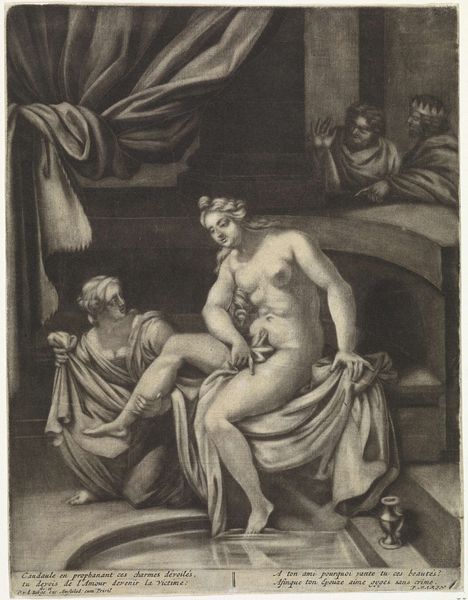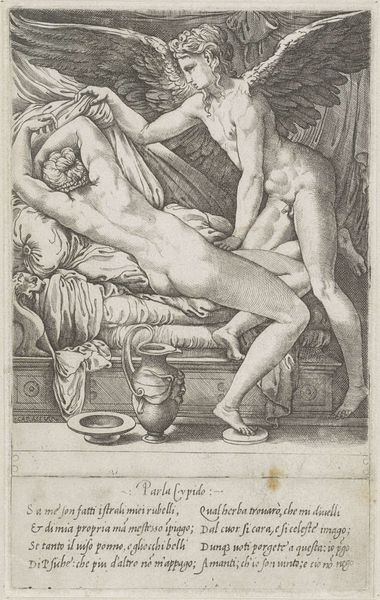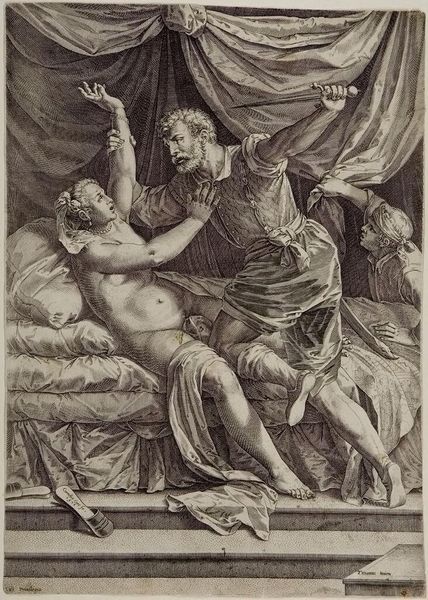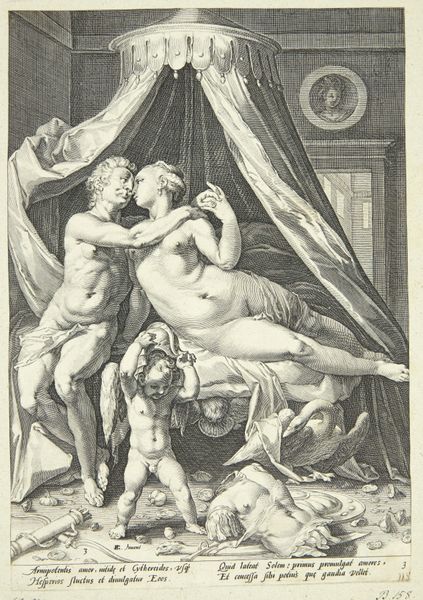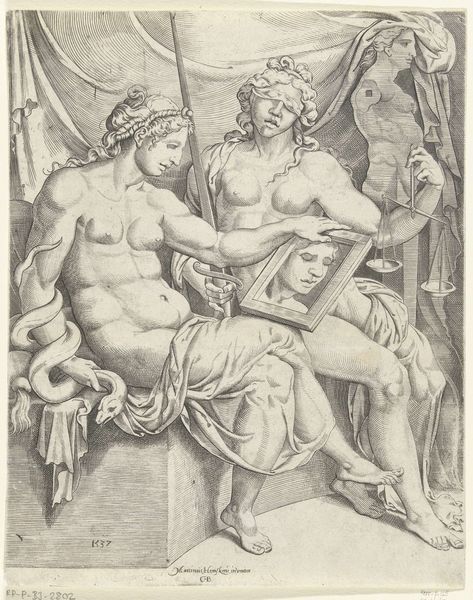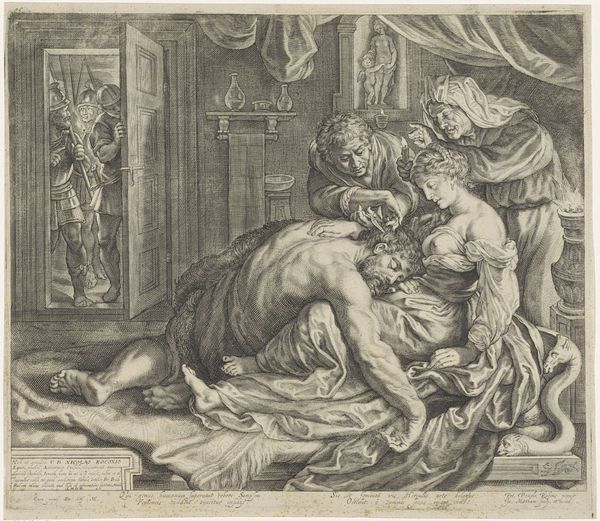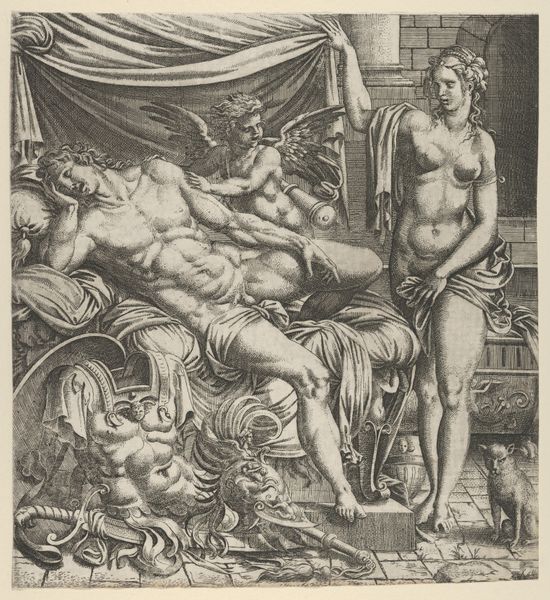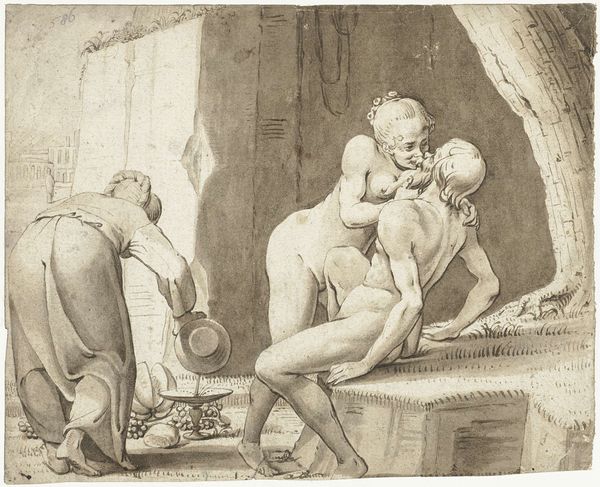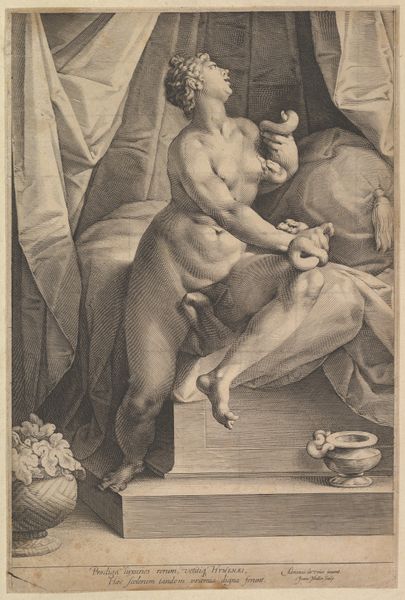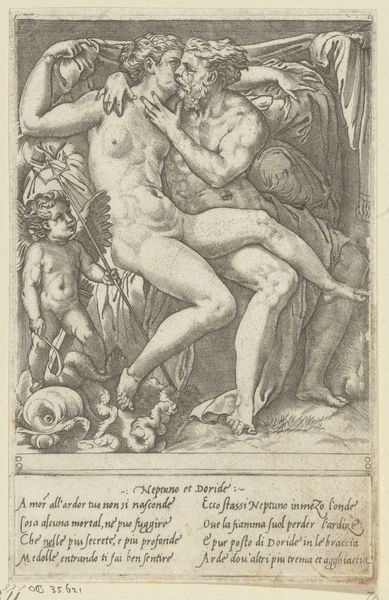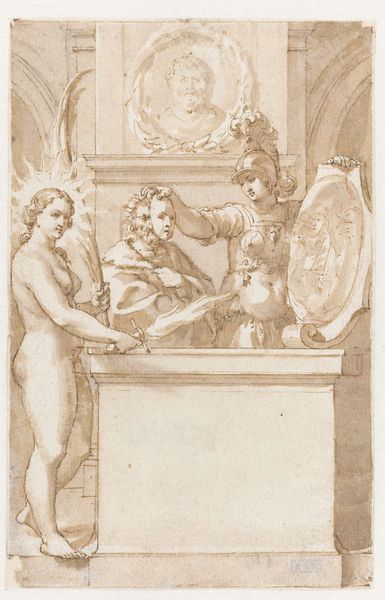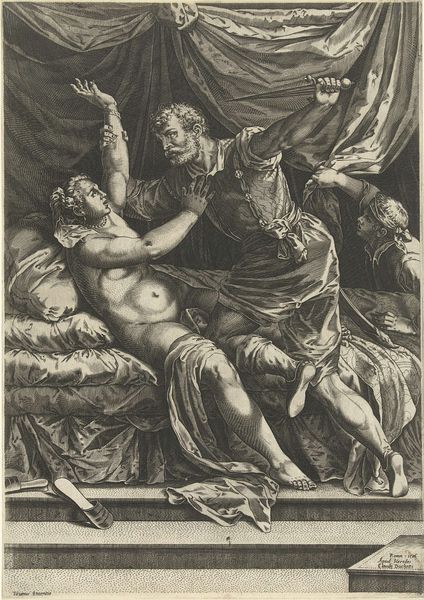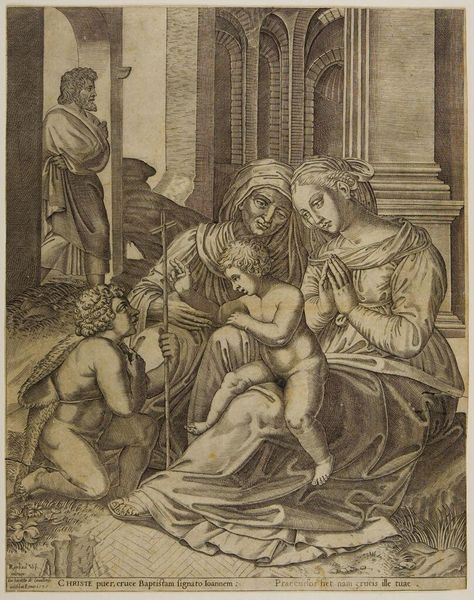
drawing, charcoal
#
portrait
#
drawing
#
neoclacissism
#
charcoal drawing
#
figuration
#
charcoal
#
history-painting
#
academic-art
#
charcoal
Copyright: Public Domain: Artvee
Editor: Here we have "The Mourning of Pallas," a charcoal drawing by Anne-Louis Girodet, created around 1790 to 1793. It’s overwhelmingly… neoclassical. I mean, just look at the figures! What strikes you about this piece, Professor? Curator: Formally, the careful use of chiaroscuro—the strong contrast between light and dark—immediately draws the eye. Note how Girodet uses the charcoal to sculpt the figures, emphasizing their musculature and the folds of their drapery, especially those mourning over the body of Pallas. Observe also the background relief and how that contributes to the symbolic density within a restricted tonal register. How does the frieze function structurally in the overall design? Editor: It seems to establish depth, maybe? And grounds the figures? The torch creates verticality which draws my eye up. I guess I’m just stuck on all the grief. It’s so…melodramatic. Curator: Consider the artist's engagement with line and form; with shape and value. Girodet wasn’t concerned with straightforward historical documentation, but with the construction of a particular aesthetic experience rooted in the ideals of Neoclassicism and his academic training. Consider, even the apparent emotion on display is very controlled; almost sculptural in its restraint. Would you not agree? Editor: I think I see what you mean. Even the gestures, while sorrowful, are very deliberate, almost posed. The figures really do feel more like sculptures. I was stuck on the feelings but not considering *how* they are constructed. Curator: Exactly! It is through this very construction that Girodet conveys meaning, highlighting form, balance, and the aesthetic ideals of his time, so we are guided in our interpretation. Editor: That’s fascinating! I’ll definitely look at art with more attention to the formal qualities moving forward.
Comments
No comments
Be the first to comment and join the conversation on the ultimate creative platform.
